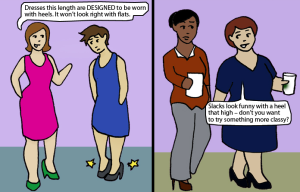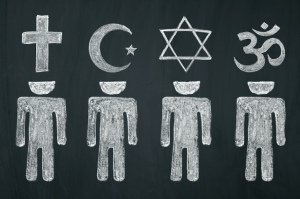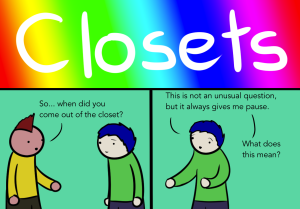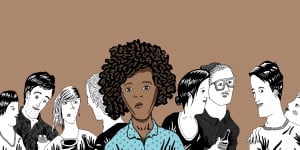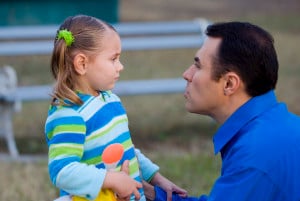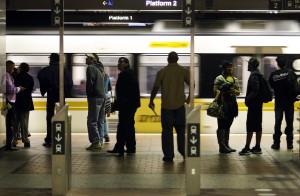
Source: LA Times
When I tell people that I don’t own a car, people treat me differently.
I travel a lot for my job. As a coach to teachers, I often visit at least two or three different schools across DC for classroom observations in a day.
But that’s not a big deal.
The big deal (for other people) is that a majority of my schools are in the “bad” neighborhoods of DC.
And these people treat me differently because they now see me as someone who has chosen to flirt with death. To them, I have cheated death on a daily basis.
“Woooow, how do you do it? But isn’t it dangerous in those parts of DC? Aren’t you scared that you will get mugged? I just don’t know how you do it. Why don’t you get a car?”
I’m not going to buy a car. I enjoy taking public transportation. I get to nap, read my Kindle, not deal with traffic and road rage, and sometimes just daydream and people watch.
And, girl, do I love me some people watching. Navigating the metro and bus system has allowed me to really understand DC. When I travel from one end of DC to the other on a daily basis, I make a lot of interesting observations.
And here are the two most important lessons I’ve learned during my observations:
1. Segregation Is Real
If you ever want an easy and cheap way to see segregation thriving in our society, jump on a metro or bus and ride it from end to end.
Bus and metro routes typically run from east to west or north to south. In DC, the 32/34/36 buses and metro’s Red Line are the best examples. They travel between the Northwest (DC’s wealthiest quadrant) and either the Northeast or Southeast (DC’s poorest quadrants).
I always conduct a little experiment when I am sitting on the 34 bus headed from Friendship Heights to Naylor Road. I make a mental calculation of white people to people of color.
While the bus is in the Northwest, passengers are predominately white. They are college students, tourists, and people in business attire. Here and there, I will see Latinxs and Asians.
As you reach the downtown area, the crowd diversifies. More people of color get on.
But the most interesting thing happens right before the bus crosses Anacostia River to enter the depths of the Southeast quadrant. The white people with the suits and Blackberries trickle out. More black people get on the bus. Often, at this point, I will turn to check on the bus again. Yup, all people of color.
Think this is just anecdotal?
Here’s a fancy map showing the percentage of DC people living in poverty, mostly congregated in the Southeast. Here another fancy map where you can see the segregation of whites and blacks. (Yeah, those colors are not really touching. Ouch.)
Yet, study after study has shown that DC doesn’t even make the top ten lists of cities considered to be “unequal” or “segregated.”
Want another test?
Sometimes when I am running late, I have to resort to calling a taxi. Ugh, I hate this. Taking a cab to Southeast DC is the worst. Nine out of ten times, the cab driver will ask me twenty questions after I tell him my destination.
“What are you doing all the way over there? Have you been there before? How are you getting back? Don’t you know it’s not a safe place to be?”
And they’re right. Southeast DC is not exactly the safest place to be. This map and this map show that crime rates are higher in Southeast DC compared to Northwest DC; however, the maps also show that the concentration of crime is in the central downtown areas. That makes sense. It’s the center of the district where residents and tourists congregate.
Yet taxi drivers still hesitate to enter Southeast DC. My friend recently shared a cab story with me.
A couple years ago, he was visiting a school in Southeast DC, and his cab driver refused to drive him the whole way, forcing him to find another cab for the second half of his trip (and it is not easy to find a cab in Southeast DC).
Not only is that illegal, but it happens more often than not in many other major cities. In 2011, college students posed as taxi riders found that 27% of the time, taxi drivers refused to drive into Brooklyn, Queens, the Bronx, and northern Manhattan.
More proof from taxi drivers that segregation lives on: My taxi drivers almost always get lost in Southeast DC because stereotypes are so rampant that taxi drivers do not frequent these areas.
Last week, my cab driver admitted to me that “the last time I was here was ten years ago. The hospital had a different name.” (This was right before he let me out and wished me “good luck getting back!”)
It’s like monsters live in Southeast DC.
And what does that say about race relations in the US?
2. This Segregation Breeds Relentless Stereotypes
So we have most white people living in the wealthier parts of DC and the poorer areas of Southeast DC predominately populated by black people. Well, it’s no surprise that I see and hear deeply troubling stereotypes and prejudices.
I am an Asian woman. So let’s get that part straight as we picture me in a crowded bus or walking on the sidewalks of Southeast DC – because sometimes I forget. And it’s important to know that I am not writing from a white or black perspective. Also, I am female. An Asian female.
The first time I realized that being Asian meant “something different” in Southeast DC was when a man approached me with a flyer. He asked me if I was interested in getting my hair done at this nearby hair salon. I politely rejected by shaking my head and saying “sorry.”
His response: “Oh, sorry,” after he shot me a very understanding look.
Well. That was confusing.
Until I realized that he thought I didn’t speak English!
Let me be clear when I say that Asian people don’t really congregate in Southeast DC. It is fairly accurate to say that most exposure to Asian culture in Southeast DC can be found in small Chinese or Thai carryout restaurants.
One of my teachers recently shared a story where she took her students on a field trip to Chinatown. She was shocked that so many of her students were blatantly pointing at Asian pedestrians and labeling them as “carryout men.”
The segregation is real, yo.
I’ve come to terms with being the “first Asian person I’ve met” to many classmates while growing up in south Florida. Now, when I walk in Southeast DC, I experience that feeling again and again. People stare. I get double-takes a lot. Rubber necking. But mostly just a lot of staring.
When I enter classrooms, I’ve seen students bow and say “konichiwa.” They use their pencils to slant their eyes and make bad imitations of my native tongue with “Ching Chang Chong,” a phrase I have not heard since I was in third grade. (And it was really just from Scott. Scott, you were a jerk.)
I have patient conversations with these students about how I was born here in the US, how I speak English, and how there is a difference between Chinese and Japanese. I have patient conversations, because I am that “first Asian person I’ve ever met” again. And because they are kids who have very limited exposure to people like me.
Also because segregation.
See what happens when we treat Southeast DC like the end of the ocean and black people like monsters that live in the end of that ocean? You create me. (I’ve heard about Asians…)
***
So, no. I am not buying a car. I love using public transportation.
Transportation is not simply about getting from point A to point B. Transportation is about building community. It’s about the message you send by simply sharing a bus seat and a smile.
If I can’t even ride the bus or share the same sidewalks with other members of my community, what does that say?
[do_widget id=”text-101″]
Amy Sun is a Contributing Writer for Everyday Feminism. She has worked with providing resources and support for Asian/Pacific Islander survivors of domestic violence in the DC, Maryland, and Virginia areas. She also holds her Masters in Women’s Studies from the George Washington University, where she has researched the coming out processes for trans* who identify as FTM and MTF.
Search our 3000+ articles!
Read our articles about:
Our online racial justice training
Used by hundreds of universities, non-profits, and businesses.
Click to learn more





